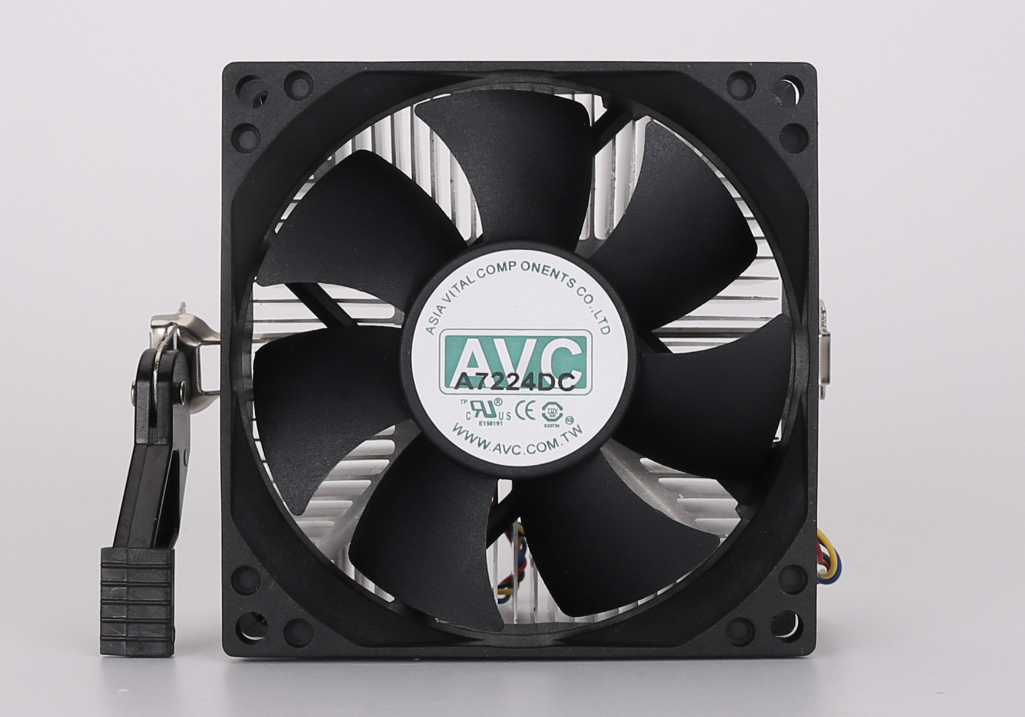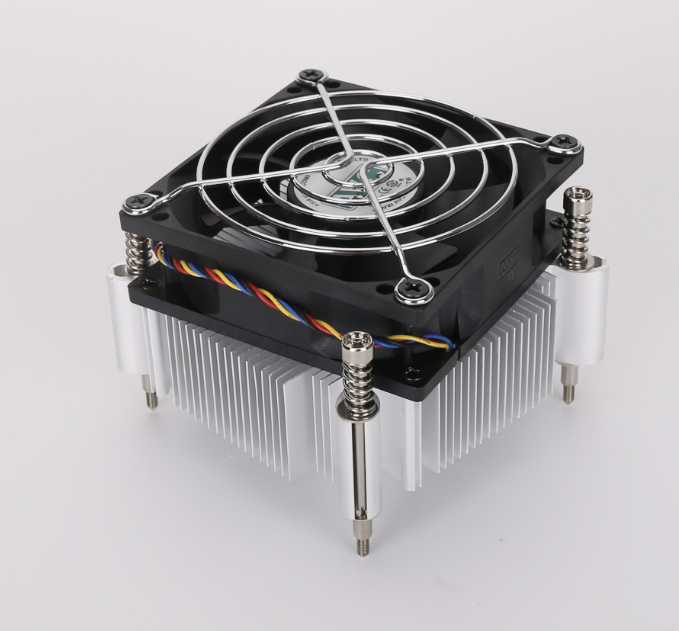What are The Types of CPU Heat Sinks?

There are many types of CPU heat sinks. Each type works differently to keep your processor cool.
Choosing the right heat sink depends on your needs. Some are simple and quiet. Others handle more heat and work better for gaming or heavy tasks.
This guide explains the main types of CPU heat sinks. It will help you pick the best one for your computer. Let’s get started and find the right fit for your setup.
Air-Cooled CPU Heatsinks
Air-cooled CPU heatsinks use metal parts and fans to lower processor temperatures. Most computers use this type of cooling because it is simple and effective.
Here are the main parts:
- Base: The base sits on the CPU and absorbs heat.
- Heatpipes: Heatpipes move heat from the base to the cooling fins.
- Cooling Fins: The fins spread heat over a larger area, so they can leave the heatsink faster.
- Cooling Fan: The fan blows air over the fins and pushes heat out of the computer case.
Air-cooled heatsinks are easy to install and maintain. They work well for most users, from office workers to gamers. If you hear your fan spinning up, it means your heatsink is hard at work keeping your CPU cool.

Water-Cooled Heat Sinks
Water-cooled heat sinks use liquid to move heat away from the CPU. This method cools more efficiently than air-cooled systems.
Main parts include:
- Cold Plate: The cold plate touches the CPU and absorbs heat.
- Water Pipes: Pipes transfer the heated liquid from the cold plate to the radiator.
- Water Pump: The pump moves the liquid through the system.
- Radiator: The radiator spreads the heat. A fan blows air through the radiator to remove heat from the computer.
There are two main types:
- All-in-One (AIO): This type comes pre-assembled. Users can install it quickly.
- Custom Loop: Users build this system from separate parts. It allows for more control and can cool other components.
Water cooling is popular for high-performance computers. It keeps temperatures low and noise levels down. Some users also enjoy the visual appeal of liquid cooling setups.
CPU Heat Sink Types by Material
CPU heat sinks use different materials to control heat, weight, and cost.
Copper Heat Sinks
Copper heat sinks move heat away from the CPU quickly, since copper has high thermal conductivity. These heat sinks are heavy and cost more. Many high-performance coolers use copper bases or heat pipes.
Aluminum Heat Sinks
Aluminum heat sinks are lighter and cheaper than copper. Aluminum does not conduct heat as well as copper. Most standard and budget heat sinks use aluminum. You will find aluminum heat sinks in many everyday computers.
Copper-Aluminum Composite Heat Sinks
Composite heat sinks combine copper and aluminum. The copper part handles fast heat transfer. The aluminum part keeps the heat sink lighter and less expensive. Many server and advanced desktop systems use these mixed designs.
Choosing the right material helps balance cooling, price, and weight. Copper is fast but heavy. Aluminum is light but less efficient. Composite designs try to offer the best mix of both.
Heat Sink Types by Design Structure
The design of a heat sink affects how well it cools the CPU.
Key factors include:
- Number of Heat Pipes: More heat pipes help move heat away from the CPU faster.
- Fin Shape and Arrangement: The shape and layout of fins increase the surface area and improve airflow.
- Fan Size and Speed: Larger or faster fans push more air through the heat sink, which helps remove heat quickly.
Some high-end heat sinks use special features:
- Direct Heat Pipe Touch (DHT): DHT places heat pipes directly on the CPU surface to lower heat resistance.
- Special Fin Shapes: Some fins have unique shapes to increase the area for heat to escape.
A good design can make a big difference in cooling performance. The right combination of heat pipes, fins, and fans helps keep your CPU cool and your computer running smoothly.
Final Thoughts
You can choose from several types of CPU heat sinks. Your decision should match your needs, budget, and CPU model.
Most users will find that an air-cooled aluminum heat sink is effective and affordable. It keeps the CPU at a safe temperature for daily use.
If you use your computer for gaming or heavy tasks, you might need a copper or water-cooled heat sink. These options handle more heat.
Select the heat sink that fits your setup. A good choice helps your computer run smoothly and stay cool.




